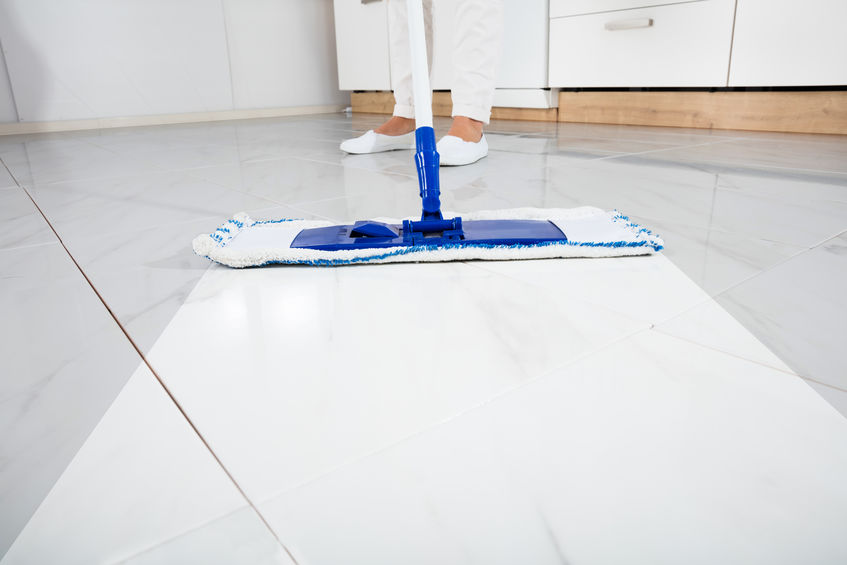How to Clean Your Floor Tiles Properly
Tile flooring options such as porcelain and ceramic are incredibly durable and provide easy cleaning and maintenance. However, it is important to take necessary precautions to avoid damaging your tiles. The best way to clean floor tiles is to start by sweeping or vacuuming your floor to get rid of loose debris. Although tile may be resistant to dirt, sand and grit can easily dull the surface especially if you do not clean up any loose debris before mopping the floor.

It is also important to choose the right cleaning tools and products. Some of the things you need to pack up include a rag, mild detergent, and clean water. Avoid using a sponge mop as it soils your floor by pushing dirty water into the grout. Always remember to change your bucket of cleaning solution as often as possible so that you do not leave a trail of dirt on the floor. If you are using a commercial cleaning product, make sure it is non-abrasive so that it does not scratch your floor.
How Should You Clean Grout Lines?
Keeping the grout clean is essential as it determines the overall appearance of your tile floors once you are done cleaning. Dirty grout can make your floors look dingy if it is not properly cleaned. Since grout is porous, it can easily absorb dirt, grease, and other forms of debris. To remove stains on grout, start by applying a commercially prepared grout cleaner and allow it to work its way through the grout for at least 10 minutes. Use a small scrub brush or a toothbrush to scrub the grout. If you are dealing with stubborn grout stains, apply a mixture of baking soda and water then allow it to rest overnight before you scrub it with a nylon brush. It is always advisable to use a soft scrub brush to avoid chipping away the grout. Applying a silicone-based sealer after cleaning the grout lines can help repel future stains.
Things to Avoid When Cleaning Floor Tiles
Do not use bleach and ammonia products to clean your tiles as they can discolor the grout and make the surface lose its luster. Although it may seem just fine at first, discoloration happens slowly and only becomes noticeable over time. When scrubbing the tile grout, avoid using steel wool, harsh scrubbing powders, or hard-bristled brush as it can cause more damage than good. Instead, use a soft scrubbing brush or cloth to remove the dirt and focus primarily on the grout lines. Since dirt can scratch or taint the floor, it is important to sweep or vacuum first before mopping. Taking extra care and precautions during cleaning can extend the life of your tile flooring.
How Often Should You Clean Your Floor Tiles?
It is recommended to maintain a regular cleaning schedule to keep your tiles looking clean and free from residue. Sweep or vacuum at least once a week or any time you visible see or feel loose debris on your feet. A soft-bristle vacuum attachment may come in handy for different types of tile floors. If you find it difficult to access tight spaces or corners then you can finish the job using a hand broom and dustpan. The frequency of wet cleaning your tile floors may vary depending on the room you intend to clean. You may have to mop your bathroom floor often compared to your living room since a lot of dirt can accumulate on your bathroom tile floor.
Cleaning your floor tiles should not be a difficult task as long as you have the essential supplies and the right idea on how to go about the cleaning. Lightweight vacuums, steam cleaners, and microfiber mops can be indispensable allies when dealing with dirt and grime on floor tiles. It is important to allow some time for your floor to dry after cleaning before walking on it. Although you don’t have to wash your floor tiles every day, most experts suggest sweeping or vacuuming regularly to prevent dirt from dulling or scratching the surface.
